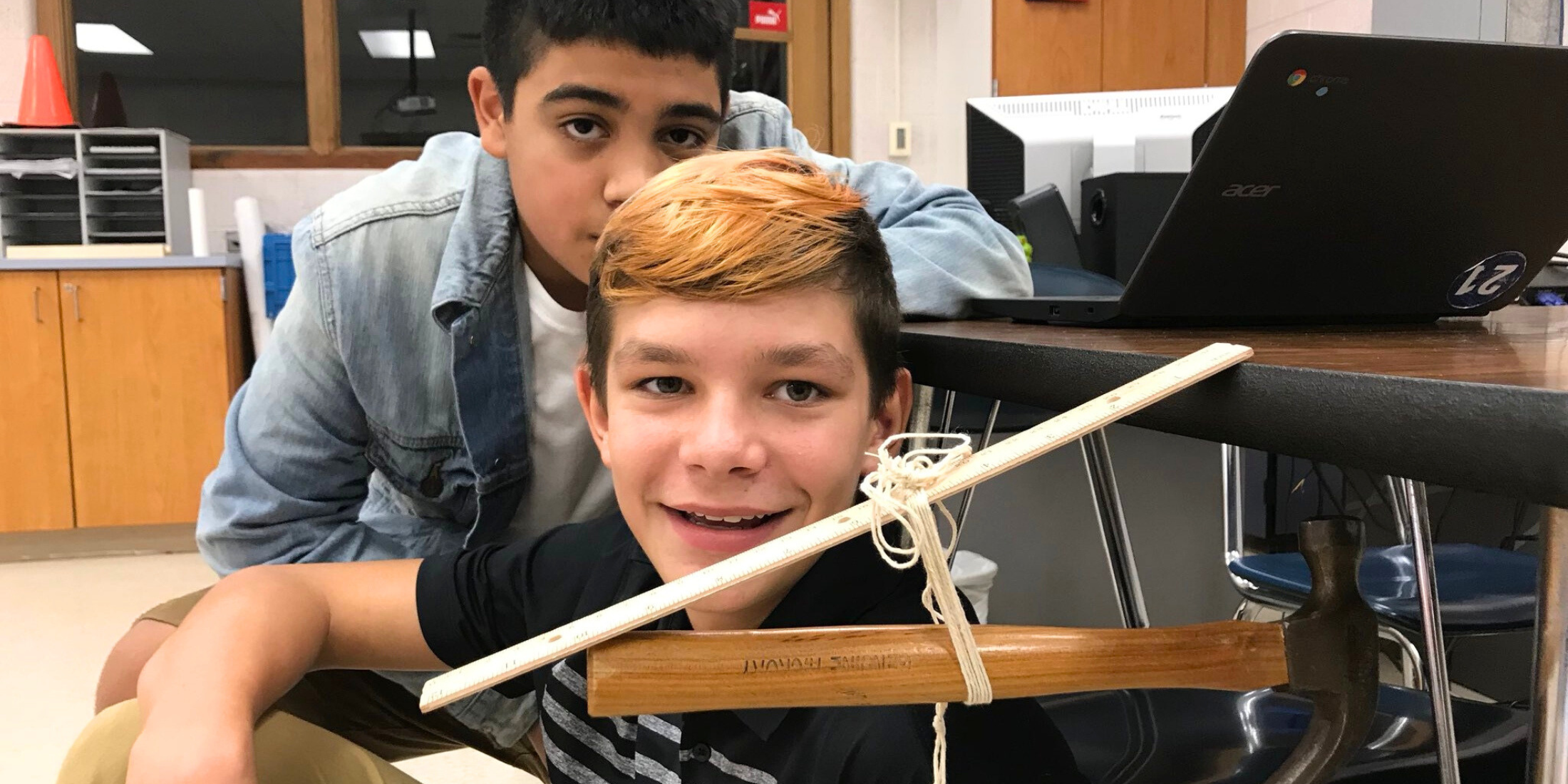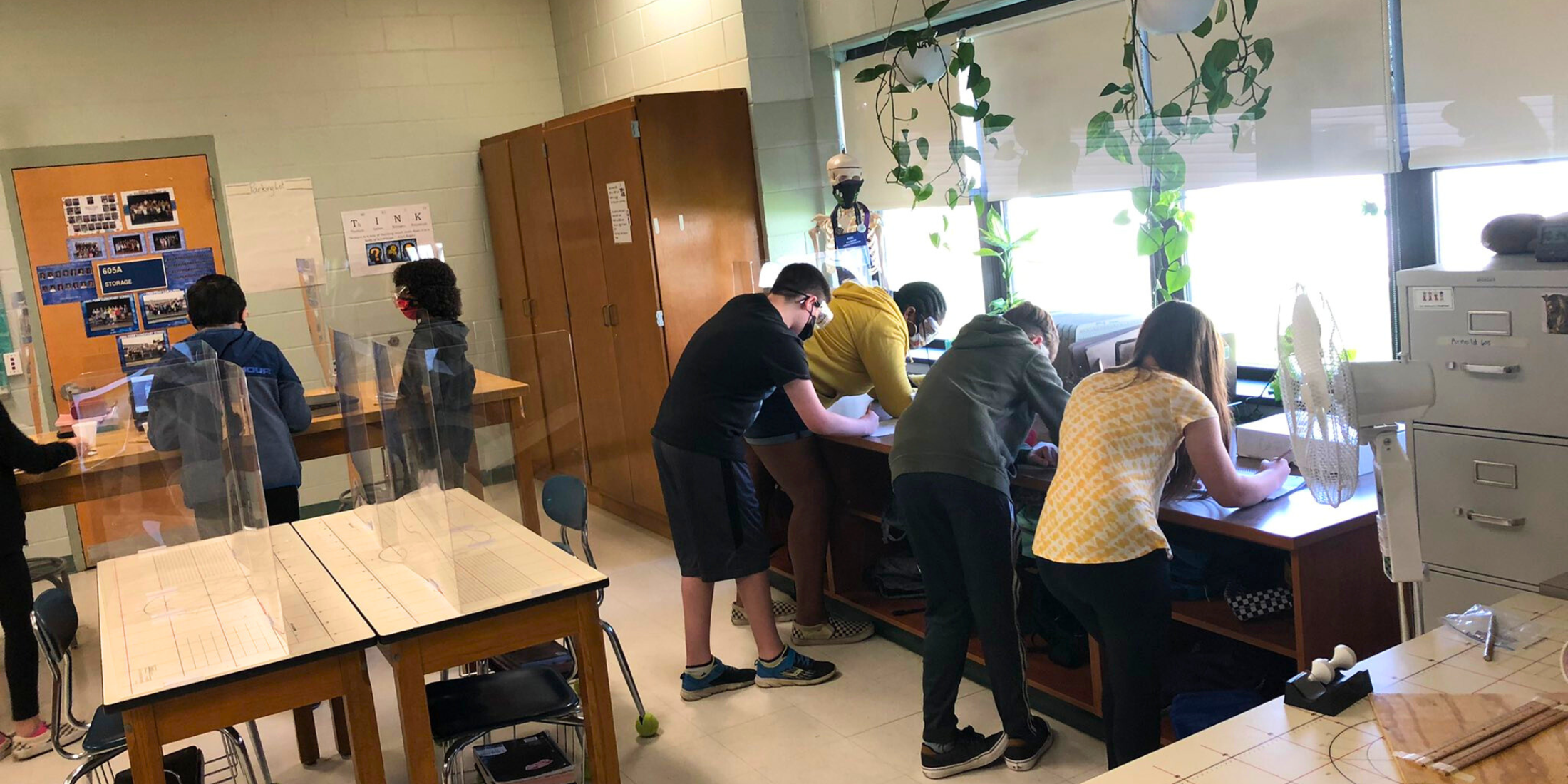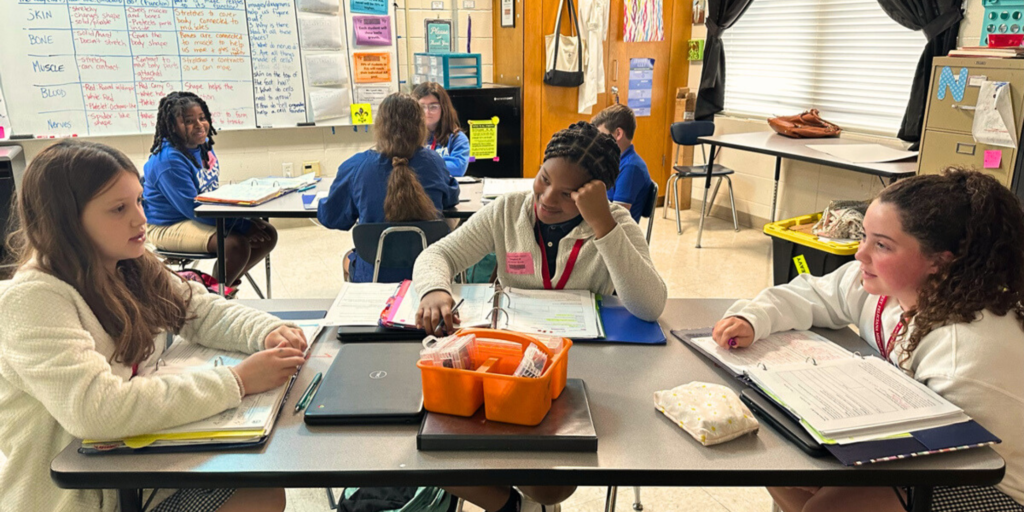Dynamic Physics and Chemistry Teaching Resources to Engage Students in Hands-On Learning
Dynamic Physics and Chemistry Teaching Resources to Engage Students in Hands-On Learning

Looking for new, engaging ways to bring chemistry and physics to life in your classroom? Following our blog post on biology teaching resources last month (6 Biology Teaching Resources to Engage Students), we're excited to share our carefully curated collection of free chemistry and physics resources.
The timing couldn't be better—alongside these resources, we're proud to announce the launch of Active Integrated Physics and Chemistry (Active IPC), our newest NGSS-aligned curriculum that integrates both disciplines through hands-on investigations and real-world phenomena, complete with project-based Chapter Challenges, comprehensive teaching materials, and professional learning support.
From superhero physics to hands-on chemistry activities, podcast series to NASA workshops, the following physics and chemistry resources offer something for every grade level and teaching style.
Physics Resources

[Students scientists investigating the magnetic cannon (IQWST curriculum). CREDIT: @BridgetA007]
1. APS Learning Center Resources (K-12)
The American Physical Society (APS) Learning Center offers a vast array of resources for physics educators, students, and advocates, ranging from hands-on classroom lessons to professional development tools. Here are a few highlights:
- Classroom Experiments exploring light and waves with activities like PhysicsQuest, Slinkys, and ChromaDepth Glasses.
- Public Engagement Training: Webinars and guides for educators and scientists cover topics such as using social media, podcasting, and writing op-eds to engage the public with physics concepts.
- Physics History & Ethics: Resources explore the evolution of physics, ethics in research, and significant scientific milestones, enriching students' understanding of the field’s impact on: Includes engaging lessons for middle school students, such as society.
- Programs & Advocacy: Initiatives like PhysTEC and STEP UP support physics education nationwide, promoting effective teaching practices and inspiring young women to pursue physics.
This resource is a powerful toolkit for educators looking to enhance their physics curriculum with dynamic, real-world applications and student-centered learning opportunities. [learn more]
2. The Physics of Superheroes (grades 6-12)
Give students physics superpowers with this book! The Physics of Superheroes by James Kakalios is a widely acclaimed book that makes physics accessible and exciting by analyzing superhero powers through real scientific principles. Teachers can use engaging examples like Spider-Man's web-swinging (centripetal acceleration) or Superman's leaps (Newton's laws) to illustrate complex physics concepts. Highly praised by Science News, Publishers Weekly, and Library Journal for making physics both fun and understandable, it's an excellent resource for sparking student interest and demonstrating real-world applications. A new workshop series begins each semester. [learn more]
3. Physics in an Astronomy Context Webinar Series by AAPT & NASA (grades 6-12)
The Physics in an Astronomy Context workshop series, hosted by the American Association of Physics Teachers (AAPT) and NASA’s Heliophysics Education Activation Team (HEAT), is a free, monthly webinar for secondary and college-level educators. Each 90-minute Zoom session includes a mini-lecture on astronomy topics, hands-on student materials, and collaborative discussions with fellow educators. Recent sessions have explored topics such as Coronal Mass Ejection Science and Planetary Magnetism, with upcoming workshops including Auroral Currents in November and Star Spectra Science in December. [learn more] [register]
4. This Month in Physics History – American Physical Society (APS)
This Month in Physics History by APS offers a fascinating collection of pivotal moments and influential figures in physics, providing educators with a valuable resource to introduce students to the scientists and discoveries that have shaped modern science. From Eunice Foote's pioneering climate research to Gladys West's contributions to GPS technology, these well-researched articles help teachers connect physics concepts to historical contexts and diverse scientists. Each entry includes photographs, detailed background, and social context perfect for classroom discussions and STEM biography projects. [learn more]
5. OpenLearn Physics Resources (grades 9-12+)
The Open University's OpenLearn platform offers an extensive collection of free physics learning materials, from quick video explainers to comprehensive 24-hour courses. Content ranges from introductory particle physics to quantum mechanics, featuring historical footage of Einstein and Bohr. Teachers can access complete lesson materials, video demonstrations, and interactive activities, all designed to make complex physics concepts more accessible. Perfect for differentiated instruction and independent student learning. [learn more]
Chemistry Resources

[Students at Forest Park Middle School analyze fat and soap, testing and comparing their soap to data collected in the IQWST chemistry unit. CREDIT: @Sci_MsTCHR (X)].
1. American Chemical Society National Chemistry Week Resources (K-12)
National Chemistry Week is an annual event organized by the American Chemical Society (ACS) to highlight chemistry’s role in our daily lives and ignite curiosity in students of all ages. This year’s theme, “Picture Perfect Chemistry,” explores how chemistry powers the world of imaging, from photography to medical and space imaging.
Even though National Chemistry Week recently passed, ACS offers a wide variety of NGSS-aligned engaging resources that teachers can leverage to bring the excitement of chemistry into classrooms year-round. Here’s our pick of just a few of their resources across all grades:
High School (ages 14-18):
- Nuclear Medicine Half-Lives Activity: Students model two nuclear medicine half-life scenarios using explanations, calculations, diagrams, and graphs. [learn more]
- ChemMatters Magazine: The engaging articles in this digital publication help high school students to make connections between chemistry and the world around them. [learn more]
Middle School (ages 11-13):
- Chemistry Career Profiles: These interviews with chemists around the world inform their students about the activities chemists perform every day. [learn more]
- Periodic Table Game: A quiz game reinforcing knowledge of protons, neutrons, and electrons. [learn more]
Elementary School (ages 5-10):
- Chemistry and Comics Activity: Students experiment with transferring ink from a newspaper comic onto another paper using various solutions. [learn more]
- Celebrating Chemistry: A fun publication designed to engage and educate elementary grade students in the basic principles of chemistry (available in English and Spanish). [learn more]
2. High School Chemistry Career Resources (grades 9-12)
Show high school students their future in chemistry! The Royal Society of Chemistry offers a comprehensive career exploration hub that chemistry teachers can use to inspire students about real-world applications of chemistry. The site features interactive job profiles sorted by salary and qualifications, detailed case studies of working chemists (from analytical technicians to software developers), and practical guides for work experience opportunities. This resource helps teachers connect classroom concepts to exciting career paths, from developing sustainable solutions to creating life-changing medicines. [learn more]
3. Chemistry World Storytelling Podcasts (grades 6-12)
Chemistry World offers educators an engaging collection of chemistry storytelling podcasts perfect for middle and high school classrooms. The library includes fascinating episodes about everyday chemistry (from chocolate's unique taste to why onions make us cry) and a complete series covering all 118 elements. Teachers can use these 5-10 minute podcasts as lesson hooks, supplemental explanations, or to demonstrate chemistry's role in daily life. Episodes include detailed show notes for easy curriculum integration. [learn more]
4. Tales from the Periodic Table – YouTube Series by Exploratorium (grades 6-12)
The Exploratorium's engaging YouTube series brings elements to life through dynamic demonstrations and fascinating historical narratives. Host Ron Hipschman guides viewers through captivating stories about elements that shaped human history, from iron's influence on civilization to uranium's impact on modern science. With 60 episodes available, teachers can use these engaging videos to demonstrate chemical concepts, spark classroom discussions, or provide enriching homework content. [learn more]
5. ChemClub - Extracurricular Chemistry (6-12)
The American Association of Chemistry Teachers' ChemClub program helps educators establish and run engaging after-school chemistry clubs. Teachers receive a digital handbook, monthly newsletters, themed activity packets, and access to grant opportunities up to $500 for community projects. These clubs give students hands-on lab experience, connections to professional chemists, and opportunities to lead elementary school outreach activities. For high school seniors, the program even offers STEM scholarships. [learn more]
6. Five Awesome Chemistry Podcasts
This curated list of chemistry podcasts is ideal for educators looking to enrich their teaching content with fresh perspectives on chemistry in everyday life, healthcare, and scientific history. Each podcast brings unique value, from easy-to-understand science communication to cutting-edge clinical insights.
- Chemistry For Your Life
Best for: Exploring everyday chemistry in an accessible way.
Description: Chemist Melissa and co-host Jam make chemistry relatable by discussing how it impacts daily life, tackling common misconceptions along the way. [listen here] - Distillations Podcast
Best for: A broad science fix with a focus on chemistry and history.
Description: Produced by the Science History Institute, this podcast blends interviews and historical stories on topics from chemical weapons to aging. [listen here] - It's a Material World
Best for: Those interested in materials science applications in everyday tech.
Description: Delivers insights on the materials shaping technology, offering a unique view into the importance of material science. [listen here] - Periodic Table of People
Best for: Students and professionals exploring chemistry careers.
Description: An inviting podcast that mixes career advice with the personal experiences of chemists, helping listeners navigate their paths in the field. [listen here] - Let's Talk Chemistry Podcast
Best for: Students and educators interested in chemistry’s impact across various niches.
Description: Features Nobel Laureates and top chemists discussing high-level research, making it an inspiring resource for students interested in the field. [listen here]
With episodes ranging from 5-30 minutes, teachers can find content to suit any lesson length or topic. Most podcasts include transcripts and show notes for easy classroom integration.
We hope these resources inspire new ways to engage students in the wonders of physics and chemistry. For even more hands-on learning, explore our newly launched Active Integrated Physics and Chemistry (IPC) curriculum designed to deepen student understanding through real-world applications. Learn more about Active IPC here.
* * * * * *




